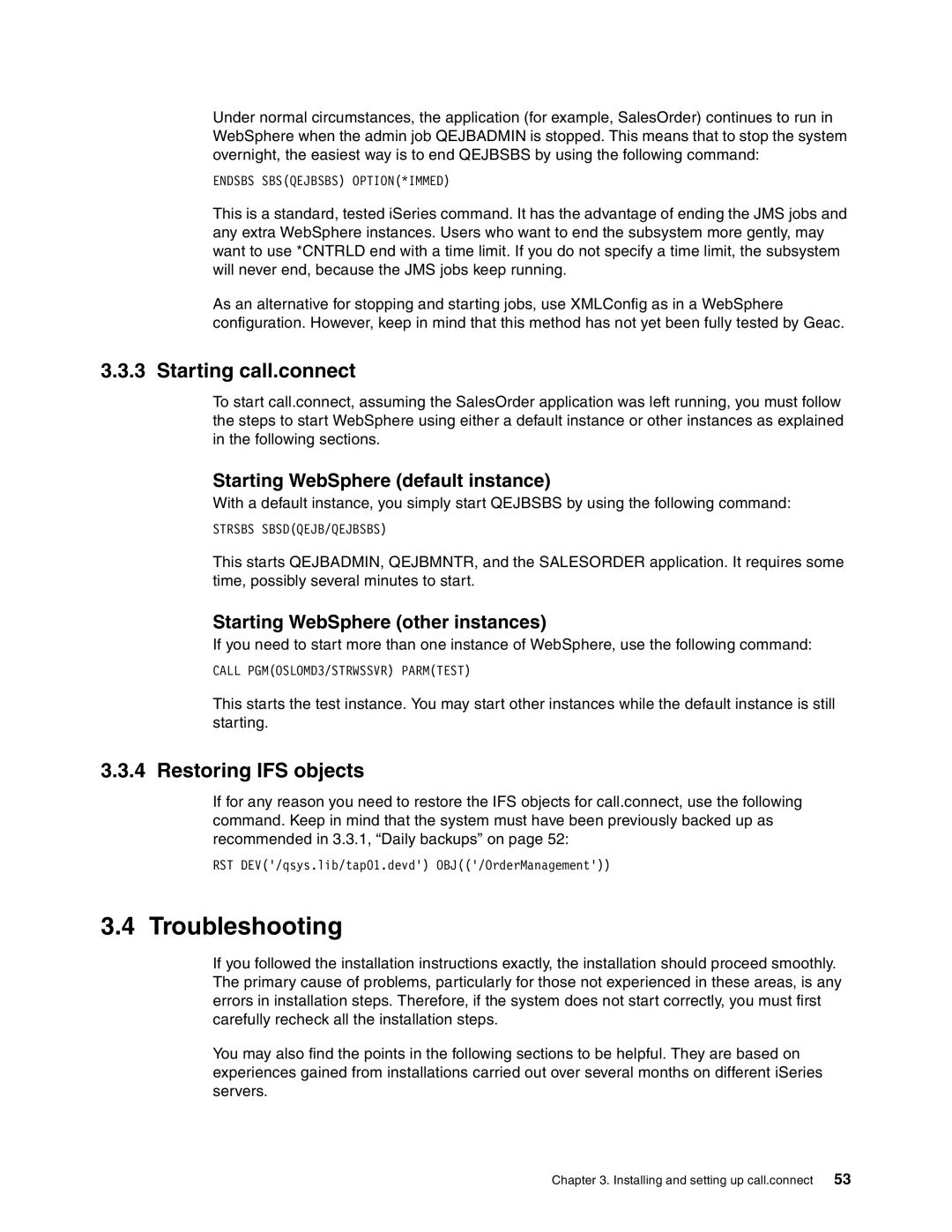Under normal circumstances, the application (for example, SalesOrder) continues to run in WebSphere when the admin job QEJBADMIN is stopped. This means that to stop the system overnight, the easiest way is to end QEJBSBS by using the following command:
ENDSBS SBS(QEJBSBS) OPTION(*IMMED)
This is a standard, tested iSeries command. It has the advantage of ending the JMS jobs and any extra WebSphere instances. Users who want to end the subsystem more gently, may want to use *CNTRLD end with a time limit. If you do not specify a time limit, the subsystem will never end, because the JMS jobs keep running.
As an alternative for stopping and starting jobs, use XMLConfig as in a WebSphere configuration. However, keep in mind that this method has not yet been fully tested by Geac.
3.3.3 Starting call.connect
To start call.connect, assuming the SalesOrder application was left running, you must follow the steps to start WebSphere using either a default instance or other instances as explained in the following sections.
Starting WebSphere (default instance)
With a default instance, you simply start QEJBSBS by using the following command:
STRSBS SBSD(QEJB/QEJBSBS)
This starts QEJBADMIN, QEJBMNTR, and the SALESORDER application. It requires some time, possibly several minutes to start.
Starting WebSphere (other instances)
If you need to start more than one instance of WebSphere, use the following command:
CALL PGM(OSLOMD3/STRWSSVR) PARM(TEST)
This starts the test instance. You may start other instances while the default instance is still starting.
3.3.4 Restoring IFS objects
If for any reason you need to restore the IFS objects for call.connect, use the following command. Keep in mind that the system must have been previously backed up as recommended in 3.3.1, “Daily backups” on page 52:
RST DEV('/qsys.lib/tap01.devd') OBJ(('/OrderManagement'))
3.4 Troubleshooting
If you followed the installation instructions exactly, the installation should proceed smoothly. The primary cause of problems, particularly for those not experienced in these areas, is any errors in installation steps. Therefore, if the system does not start correctly, you must first carefully recheck all the installation steps.
You may also find the points in the following sections to be helpful. They are based on experiences gained from installations carried out over several months on different iSeries servers.
Chapter 3. Installing and setting up call.connect 53
